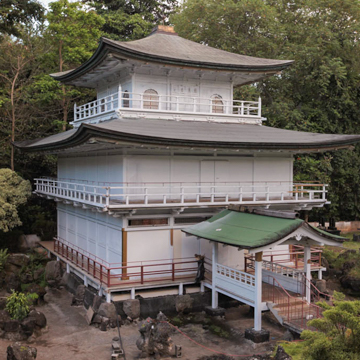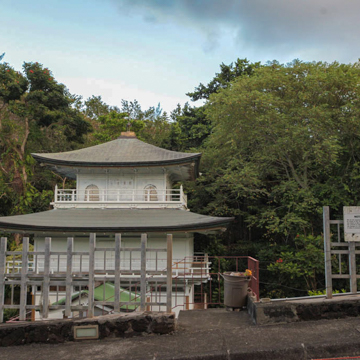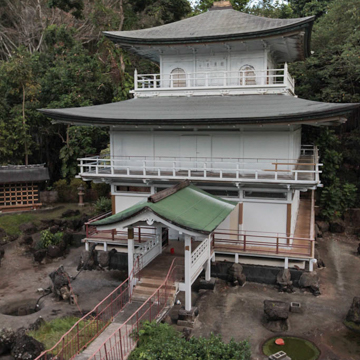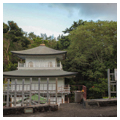A serene enclave secluded on the banks of the Nuuanu stream, Kyoto Gardens is a columbarium complex which includes a three-tiered, heavily bracketed, and reinforced-concrete pagoda and a pavilion that is a close copy of Kyoto's Kinkaku-Ji, or “Golden Pavilion.” The pavilion is surrounded on three sides by a pool, which is too small to generate the magnificent reflections of the original. The three-story, tapering silhouette with its flared hipped roofs and wraparound engawa remains true to form, and the Japanese-appointed interior is devoted to crypts on all three floors. The phoenix-capped pavilion incorporates modern and traditional building methods. Utilizing a lava-rock-clad, reinforced-concrete foundation and a concrete and steel frame, the gold-painted structure's copper-shingled, wood-framed roof was built without nails. Roof carpenter Akejiro Kimura of Kyoto also rebuilt the Golden Pavilion at Kyoto in 1955 after a fire had destroyed the original of 1432.
The 116-foot pagoda, erected in 1966 as a replica of the Sanju Pagoda on the grounds of the Minami Hoke-ji Temple in Nara, Japan, houses niches for urns. It also was designed by Robert Katsuyoshi, and at the time of its construction was the only known concrete pagoda in the world. The original purpose of pagodas was to store relics and sacred writings, and the form became widespread as a reliquary in East and Southeast Asia.






















